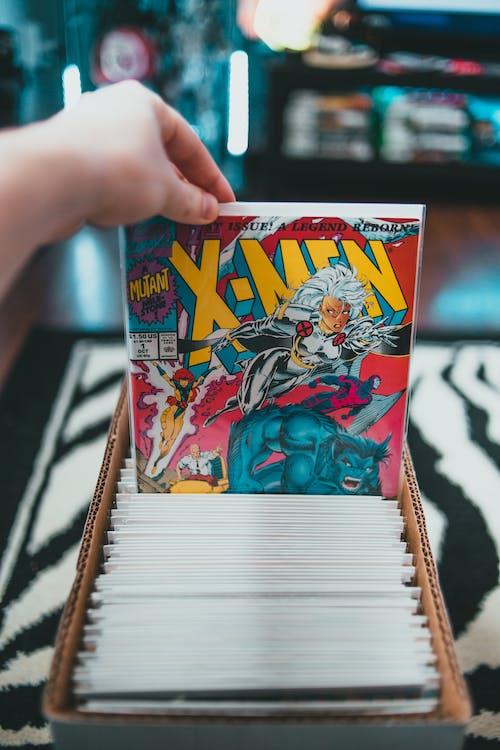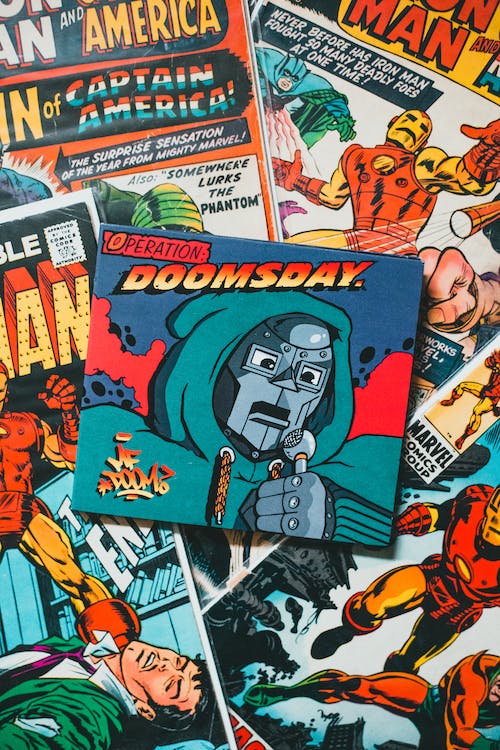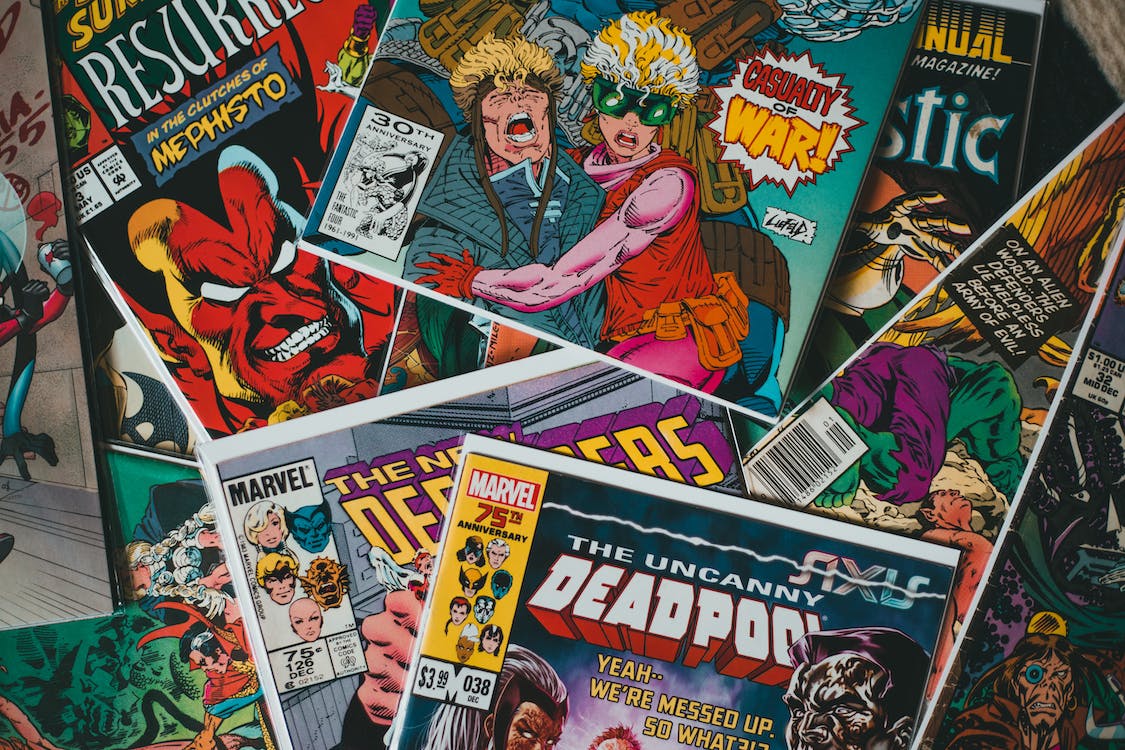Introduction
Are you looking for a new hobby? Why don’t you try collecting comic books? Hobbies enthusiasts are aware that downtime should be enjoyed rather than wasted. You will never think of your free time as dull if you have a hobby you enjoy. It has been discovered that hobbies are therapeutic. They calm anxiety and stimulate thought. Comic books are trendy across many generations. The popularity of comic books, comic characters, and even comic-related action figures has recently skyrocketed. The popularity of comics also brought back memories of simpler times when everything was just for fun.
Moreover, comic book collecting is a rewarding pastime that could bring you money if the value of the accumulated comics rises. Many comic books increase in value due to various factors, such as the ease of obtaining an issue, the book’s physical condition, and the series’ popularity. The variety of comic books available now mirrors that of the collectors. Comic book topics include comedy, fantasy, horror, drama, mystery, crime, science-fiction, and the thrilling exploits of superheroes like Batman and Wonder Woman.
Brief Overview of Comic Book Collecting

Comic books and related materials are treated as valuables or works of art that should be sought for and protected in the hobby of comic book collecting. Comic book collecting has been a pastime for many years. It can be profitable while enabling fans to delve deeper into their favorite stories and characters. Because of their scarcity, comics have become a valuable collection to many comics enthusiasts.
Comics are collected for various reasons, including fascination, nostalgia, monetary gain, and collection completion. The success of superhero characters like Superman, Batman, and Captain Marvel in the 1930s helped the comic book become widely known in popular culture. Since the 1960s, Marvel and DC Comics have dominated the American comic book market. While some comic book collectors do so out of personal love for the genre or characters, others do it for financial gain.
Genres of Comics

Comics feature a wide variety of writing genres and writing styles. Primarily to meet any taste worldwide by appealing to an extensive range of people. Just a few of the many genres that may be found in the world of comics today include the following:
1. Fantasy – Fantasy graphic novels and comic books frequently transport you to a world populated by magical or mythical beings. It is customary for the story to take place in a medieval setting, but it is not required. Dark fantasy, a subgenre that mixes fantasy and horror themes, is also well-represented in comic books.
2. Horror- Graphic novels and comic books about horror are precisely what they sound like. They want to frighten you by depicting horrifying incidents, repulsive monsters, or simply by conjuring upsetting scenarios. The variety of horror in comic books and graphic novels is endless; the artist’s flexibility can lead to some seriously bizarre imagery.
3. Humor – You probably picture the traditional comic strips from the Sunday newspaper when you think of comedy comics, and you’re correct. Since then, comedy-based comics and graphic novels have developed into works with humor that are more contemporary and occasionally more sophisticated. However, aside from classic comic strips, few comic books or graphic novels focus exclusively on humor. Instead of making the story all about humor, most authors include humor throughout it.
4. Mystery – The most significant mysteries in mystery comics and graphic novels keep you turning the pages as you try to find answers. As you read, you’ll have the impression that you’re solving the crime or anomaly with the main character.
5. Nonfiction – Nonfiction comics and graphic novels, like nonfiction books, tell a genuine story that deals with a real-life situation. Nonfiction graphic novels exist because wordy biographies and textbooks are only sometimes exciting and sometimes have an impact. A nonfiction story becomes considerably more meaningful and remembered when art is present.
6. Science Fiction – Unlike fantasy, science fiction comics and graphic novels create future settings. These tales strongly emphasize time travel, space travel, aliens, and cutting-edge technology. They occasionally discuss humanity’s future, whether it be a decaying dystopia or a society that has made incredible advancements. You can discover several sci-fi subgenres in the comic book and graphic novel industries, including cyberpunk, post-apocalyptic, and steampunk.
7. Superhero – The superhero genre has dominated the comic book industry. It’s simple to understand why the genre has grown so well-liked. The premise of most superhero comics is that everyone desires to be a superhero who fights evil and saves the city. Superhero comic book series are still the most popular, having gained popularity in the 1930s.
8. War – Graphic novels and war comics frequently coexist with nonfictional literature. They occasionally deal with fictitious wars, even though they are typically based on actual ones. This genre vividly portrays the suffering of battle and was particularly well-liked between the 1950s and the 1970s when the United States participated in multiple wars.
9. Mangga – The term “manga” describes a trade paperback graphic novel that originated in Asia and has recently soared to new heights of popularity in the United States. Numerous genres within manga are promoted to certain reader demographics. The core audience for the Shojo subgenre, which typically includes romance and drama, is young adolescent girls. The manga translated from Japanese is typically printed to be read from right to left in order to maintain the integrity of the original edition. This type of manga, which is generally aimed at boys and contains humorous plots and lots of action, is known as “Slice of LifeShonen.” Manga books often consist of a series with numerous volumes and may be highly addictive.
10. Slice-of-Life- Many graphic novels and comic books depict everyday life thoughtfully. These can be written as historical fiction, love stories, autobiographies, and more. Adults and older teenagers seeking a contemplative read typically favor slice-of-life comics.
Importance of Comic Books in Popular Culture

Comic books have made a big difference in modern culture, affecting everything from politics to art, literature, film, and television. Comics have been used to convey stories and have influenced popular culture from the early 20th century. They have created enduring narratives and famous characters that have connected with readers of all ages and transcended their medium to become a cultural phenomenon. Here’s a look at how comics have influenced popular culture and how they still influence and are a part of mainstream media.
1. Comic books have impacted pop culture in the media.
Comics have notably influenced pop culture by their incorporation into different media. Superman, Batman, Spider-Man, and the X-Men are just a few of the well-known comic book characters and tales that have been made into films and television programs, frequently with tremendous success. Not only have these adaptations attracted new readers to the original comics, but they have also influenced how people view these characters and their storylines in general.
2. Comic books have a significant influence on advertising, politics, and entertainment.
Characters, customs, imagery, and even vocabulary from comic books are now frequently employed in media such as advertising, politics, and entertainment. They are now a crucial part of our collective vocabulary. There is also a sizable quantity of research being done on the subject. Since their humble beginnings as repeated comic strips, comic books have developed into literature, art, and culturally significant entities.
3. Comics have impacted the creation of video games.
Comic books have also impacted video games. Numerous well-known video games, such as Spider-Man: Miles Morales and Batman: Arkham Knight, are based on comic books and contain plots and characters from the source comics. These video games have contributed to further popularizing these characters and introducing the comics to new audiences.
4. Comic Books have helped in the promotion of love for reading and literacy.
One benefit is that comic books have aided in fostering a love of reading and literacy. Many people, especially kids and young adults, first learned to read through comic books. They went on to read more challenging works of literature. Since they frequently present original plotlines and characters, comics have additionally aided in fostering creativity and imagination.
5. Comic Books promote social and cultural awareness.
The spread of social and cultural awareness has benefited from comics. Numerous comics, even those with superheroes, have addressed societal concerns, including injustice, bigotry, and inequality. These comics have inspired viewers to consider these problems critically and have assisted in increasing awareness of them.
6. Comics have influenced the fashion industry.
Comics has influenced the fashion and merchandise industries. Numerous well-known figures, including Superman and Wonder Woman, have inspired apparel collections and other products, such as t-shirts and hats. These merchandise items have contributed to these characters’ continued promotion and popularity, increasing their fame in popular culture. Fans of these characters have started to feel a feeling of community thanks partly to clothing and accessories that draw inspiration from comic books. Many people exhibit their love and admiration for these characters and their storylines by wearing or owning items based on comic books.
Tips for Collecting Comic Books

Are you prepared to start an exciting trip into the world of collecting comic books? Here is a comprehensive guide for both the rookie enthusiast and experienced collector. Let’s explore the essential suggestions to advance your comic book-collecting hobby as we explore the exciting world of superheroes, villains, and visual storytelling.
1. Enjoy yourself.
The adventure of collecting comic books should be embraced. Let your love of enduring personalities and compelling stories inspire your collection. Focus on the pure enjoyment of reading and owning these amazing stories rather than being bogged down by the idea of investment. Accept the excitement and thrill of meeting new people and learning about their stories. Your excitement will fuel your path as a collector.
2. Start your comic book collection gradually.
Learn as much as you can about well-known superheroes and their significant problems. Value increases are more likely to occur with critical difficulties. Buying comic books you enjoy when you first start collecting them is ideal since you’ll always be satisfied with your purchase. Make a monthly spending plan and stick to it, or you risk running out of money and storage space for comic books before you can build the collection of your dreams. Experts’ best bit of advice is to start slowly.
3. Conduct research
Get the necessary information to navigate the enormous comic book landscape efficiently. This is when in-depth research is valuable. Learn about the important story arcs, artists, writers, and characters. Research tools include online sources, comic book communities, and price guides. Finding comics with potential value—whether because of their scarcity, first appearances, or historical significance—is essential to study. Collectors frequently concentrate on items with the potential to increase in value over time. But remember that a comic book’s worth is frequently correlated with your emotional attachment.
4. Only purchase paper comic books.
Most comic books are initially released in manageable issues between 10 and 20 pages long. Both physical and digital media might have problems. Digital formats often cannot be sold or exchanged and do not have an increasing worth over time. Buying a trade paperback collection of five or more issues in one volume or a graphic novel with a complete story arc will save you money if money is tight. You are willing to wait, but graphic novels seldom ever appreciate. Suppose you have a bookshelf or table to put them on. In that case, trade paperbacks and graphic novels are undoubtedly simpler to store than individual comic book issues.
5. Set objectives.
Successful comic book collectors set clear objectives. Set your focus instead of gathering everything that catches your sight. You can keep focus and purpose in your collecting journey by setting goals. It keeps you from getting overwhelmed by the sheer number of comics that are accessible and makes sure that your collection accurately represents your hobbies and passions.
6. Establish connections with other comic book collectors.
Make friends with other comic book enthusiasts while perusing the racks at a comic con or bookstore. You can read a comic book without purchasing a copy, trade comic books with them, or rent and borrow comics. Many collectors have reader difficulties, issues they don’t read, and issues they try to safeguard differently.
7. Go to Comic Conventions.
There are dozens of comic book conventions held annually in the United States, attracting thousands of fans who want to meet the creators of comic books, take pictures with superhero movie actors, find deals on new or rare comics, or hear about upcoming comic books and movies. San Diego Comic-Con is the most well-known but not the greatest of severe collectors.
8. The Value of Your Collection Depends on its Condition
The condition of the comic book is crucial. In terms of value and aesthetic appeal, a comic that has been well-preserved can differ significantly from one that has been readied for the trash. Prioritize the condition of the comics you buy as you expand your collection. Invest in acid-free boards and bags to shield your comics from UV rays and other environmental deterioration. Learn about comic book grading standards, which range from “Mint” to “Poor,” to evaluate the state of your comics properly—the value of the comic increases with grade level.
9. Make a Record of Your Collection
It’s never been simpler to catalog your comic book collection in the digital era. Utilize software and mobile applications for collectors to track your purchases. Using these tools, you may make an exhaustive inventory that includes information on the title, issue number, publisher, condition, and purchase date. Documenting your collection makes organizing more manageable and provides a valuable record for insurance purposes. Having a recorded collection might make filing claims for loss or damage easier.
10. Look for the critical issues.
The genuinely rare essential issue comics are the holy grail of a collection and can be valued hundreds, thousands, or even millions of dollars. While earlier comic books, such as those from the Golden Age, are generally worth more, the most priceless ones focus on a significant plot point in a well-known series.
Conclusion
Comics have greatly influenced movies and television. Along with music and fashion, comics have affected other facets of popular culture. Similarly, superhero-themed apparel and accessories have grown in popularity recently thanks to the influence of comic book characters and themes on fashion designers. Today’s readers have a variety of genres and forms of comics, which continue to play an important role in popular culture.
Embrace the power of networking conditions, make clear goals, perform comprehensive research, have fun, and document your collection. By using these techniques, you’ll improve your comic book collection and join a dedicated and active collecting community. Unlock comic books’ power and let your collection represent your preferences and hobbies. Comic book collecting offers a world of limitless possibilities and limitless fun, whether you’re drawn to the bold adventures of superheroes or the intriguing plots of graphic novels.
